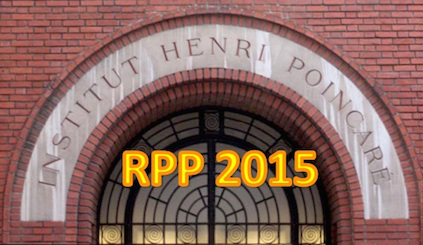Dr
Takashi Toma
(LPT Orsay)
15/01/2015 13:15
Gamma-ray generated by annihilation or decay of dark matter can be its smoking gun signature. In particular, gamma-ray coming from internal bremsstrahlung of dark matter is promising since it can be a leading emission of sharp gamma-ray. However if thermal production of Majorana dark matter is considered, the derived cross section for internal bremsstrahlung becomes too small to be observed by...
Dr
Lance Labun
(University of Texas, Austin)
15/01/2015 13:15
Locating the QCD critical point is the goal of several major heavy ion collision experiments, and it may be possible to see signatures of critical behaviour in event-by-event fluctuations of conserved charges. We show characteristic peaks in the third $\chi_3$ and fourth $\chi_4$ fluctuation moments of baryon number as a function of chemical potential (or center of mass energy) and how they...
M.
Lucien Heurtier
(CPHT, Ecole Polytechnique)
15/01/2015 13:15
Dr
Bradley Kavanagh
(IPhT Saclay)
15/01/2015 13:15
In order to analyse data from direct detection experiments, it has previously been necessary to make assumptions about the dark matter (DM) speed distribution. However, it has been shown that for a future discovery, poor astrophysical assumptions may lead to a bias in the reconstructed DM mass and cross section. I will present a completely general parametrisation of the speed distribution...
Sabine Kraml
(LPSC Grenoble)
15/01/2015 13:15
SModelS is an automatised public tool for the interpretation of so-called Simplified Model Spectra (SMS) results from the LHC. I will discuss the working principle of SModelS and present some applications to supersymmetric models.
Dr
Christian Torrero
(Centre de Physique Théorique (Université d'Aix-Marseille))
15/01/2015 13:15
Besides connecting the pion-nucleon and the kaon-nucleon amplitudes to the hadron spectrum, nucleon sigma terms play an important role in the direct detection of Dark Matter. A lattice computation will be outlined, preliminary results for the up-down and strange sigma terms will be presented and strategies to improve on their precision will be illustrated.
M.
Nicolas Deutschmann
(IPNL)
15/01/2015 13:15
One of the most interesting sectors to look for new physics at the LHC is that of the top quark, both for theoretical and phenomenological reasons. A number of possible final states involving the top have been considered by the experimental collaborations and they have successfully constrained many Beyond the Standard Model scenarios. In this presentation, I will describe a study intended to...
Jean-Baptiste Flament
(IPNL)
15/01/2015 13:15
As the LHC experimental collaborations have released results about the influence of the existence of the Higgs boson outside of its mass shell, interpreting it as a constraint on its total width, we propose a more model-independent way to recast these observations. We advocate for the use of the parametrisation previously introduced in hep-ph:0901.0927 and hep-ph:1210.8120 to use conjointly...

